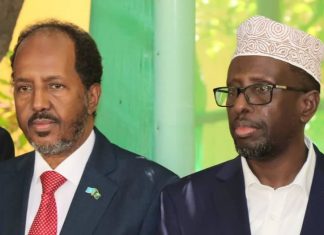Share the post "Securing Somalia’s future under climate risks and natural capital depletion "
Since the early 1990s, people of Somalia have been continuously exposed to climate risks and multiple hazards – namely protracted drought, food shortage and famine, armed conflict and forced displacement, this nation is facing a crisis, which needs many solutions. Nature-based Solutions could be part of the puzzle…
The terrible impact of these crises has been felt across the country and beyond, but Somali people living in rural and conflict-affected areas have experienced the most devastating consequences. Hundreds of thousands of people lost their lives to periodic famines or to the armed conflict, millions were forced to migrate, and at the same time, critical natural resources such as water, land and biodiversity have been lost or degraded at an alarming rate.
Protracted droughts have become more intense, frequent and unpredictable. Drought incidents, which used to occur every eight to ten years, are now happening every four to five years or even more often. The last major incident struck in 2011 and it triggered a widespread food shortage, followed by famine, killing more than 258,000 people and leading to mass migration internally. Since then, drought has struck twice – in 2017 and the current crisis that began in early 2020.
Rising mean temperature in the medium to long-term means more unpredictable rainy seasons to come. Despite the increasing climate risks and multi-hazards and very hard lessons over the last three decades, the decision-makers, within the country and outside, have learned little on how to address these risks and threats more effectively in the future.
As of October 2022, five consecutive rainy seasons had failed, creating a very tough climatic condition for millions of farmers and pastoralists in Somalia. Most of the country is under severe drought, crop production has failed and livestock production has diminished rapidly over this period. The climate risk exposure also compounded with other hazards including the Covid-19 pandemic, lack of remittance flows and poor animal health. Due to the cancellation of the Hajj pilgrimage, livestock exports were reduced to zero, and at the same time the flow of foreign remittances into the country drastically reduced. To make matters worse, in 2020 the Horn of Africa faced the worst plague of locusts in 25 years, resulting in a complete destruction of crops and pastures. Rural and pastoralist societies are the most badly hit by such unprecedented loss and decline of natural capital goods and services. A major source of income in rural Somalia has disappeared.
Source:- https://odi.org/en/insights/securing-somalias-future-under-climate-risks-and-natural-capital-depletion/




